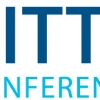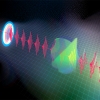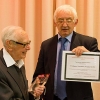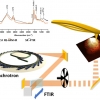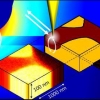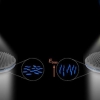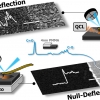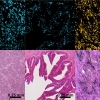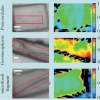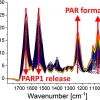News
Infrared Spectroscopy News
Professor Peter Lay from the University of Sydney has been awarded the Australian Synchrotron Lifetime Contribution Award by ANSTO, the Australian Nuclear Science and Technology Organisation.
The mineral olivine, thought to be a major component inside all planetary bodies, holds secrets about the early formation of the solar system, and an IR spectral region can be used to study it remotely.
Researchers have developed a new imaging spectrometer that is much lighter and smaller than state-of-the-art instruments while maintaining the same high level of performance. Because of its small size and modular design, the new instrument has obvious applications to airborne vehicles and even planetary exploration missions.
Howard Mark and Jerry Workman have been awarded the 2020 Gold Medal by the New York section of the Society for Applied Spectroscopy.
Mass spectrometry, XRF and NIR spectroscopy are being used together with voltammetry to determine the origin of ancient ceramic fragments.
Shimadzu opened a branch office in Denmark in September, providing local support.
Researchers combined AFM-IR and TERS to study the surfaces and interiors of viruses.
The current state-of-the-art IR spectroscopy method can make approximately 1 million observations per second. University of Tokyo researchers have developed a new method about 100× faster.
The mass of microplastics in the Atlantic Ocean has been significantly underestimated.
Nominations for the 2020 Norman Sheppard Award are invited.
Synchrotron infrared nanospectroscopy has been used for the first time to measure biomolecular changes induced by a drug (amiodarone) within human cells (macrophages) and localised at 100 nm scale, i.e. two orders of magnitude smaller than the IR wavelength used as probe.
NIR reflectance spectral maps of heart tissue can distinguish between fat and muscle tissue in the heart and could help improve delivery and monitoring of ablation therapy.
Researchers from the Nanooptics Group at CIC nanoGUNE (San Sebastian, Spain) have shown that nanoscale infrared imaging can analyse materials up to 100 nm below the surface.
Researchers have integrated a photo-patterned liquid crystal into a dielectric metasurface to achieve achromatic and chromatic focusing with a single metalens.
Researchers at the Beckman Institute for Advanced Science and Technology have developed a new method to improve the detection ability of nanoscale chemical imaging using atomic force microscopy.
Infrared microscopy can automatically detect the type of intestinal tumour within 30 minutes. These results are then used to make targeted therapy decisions.
The presence of kaolinite haloes surrounding ancient fossils is believed to have kept destructive bacteria at bay, stopping decay. The small molecular differences of the clay were analysed with the synchrotron infrared microbeam at Diamond Light Source.
Using a smartphone camera and spectral super-resolution spectroscopy, anaemia and blood disorders can be assessed outside the lab.
Researchers from the University of Konstanz have observed in real time the molecular processes that take place at DNA strand breaks by means of infrared spectroscopy.




